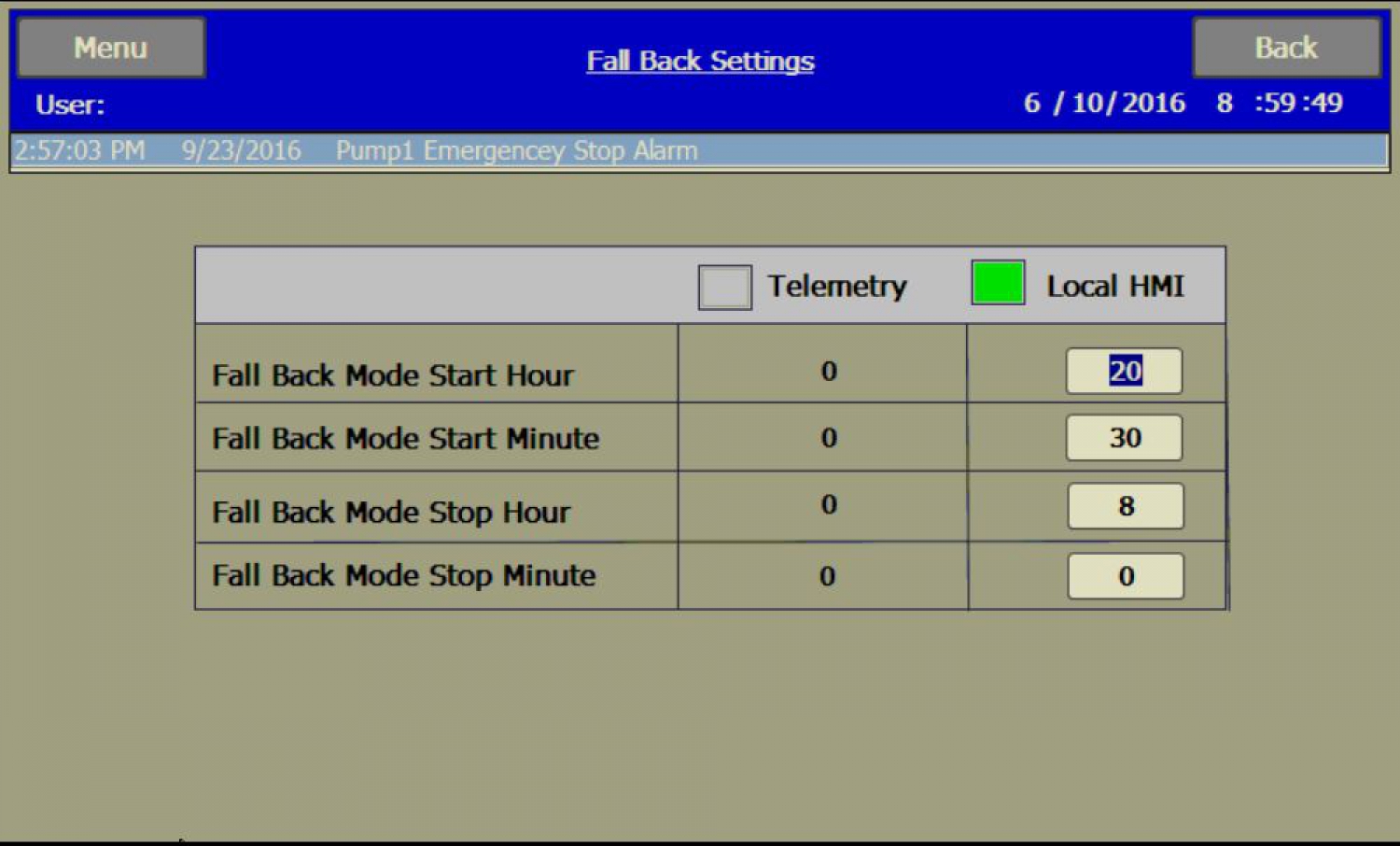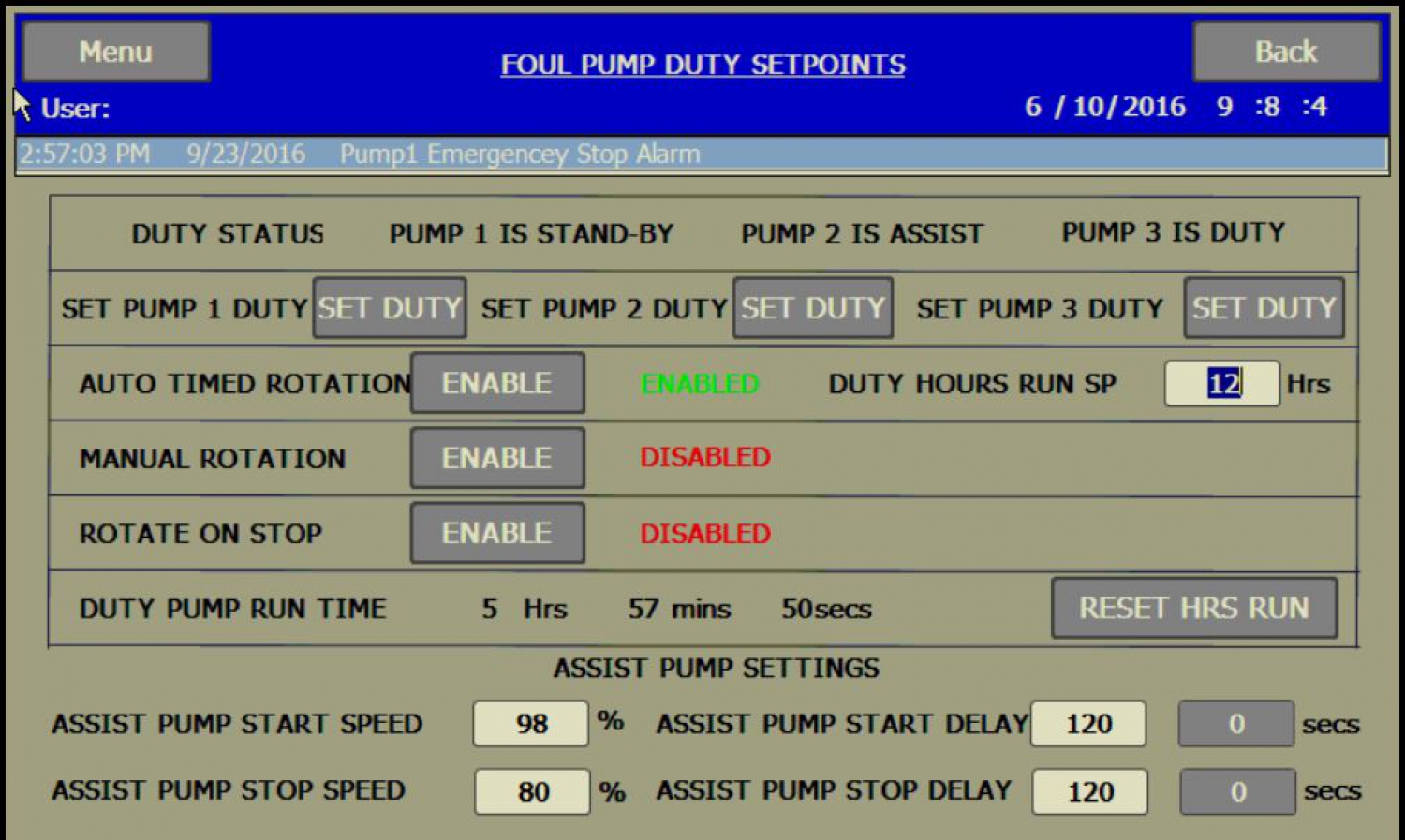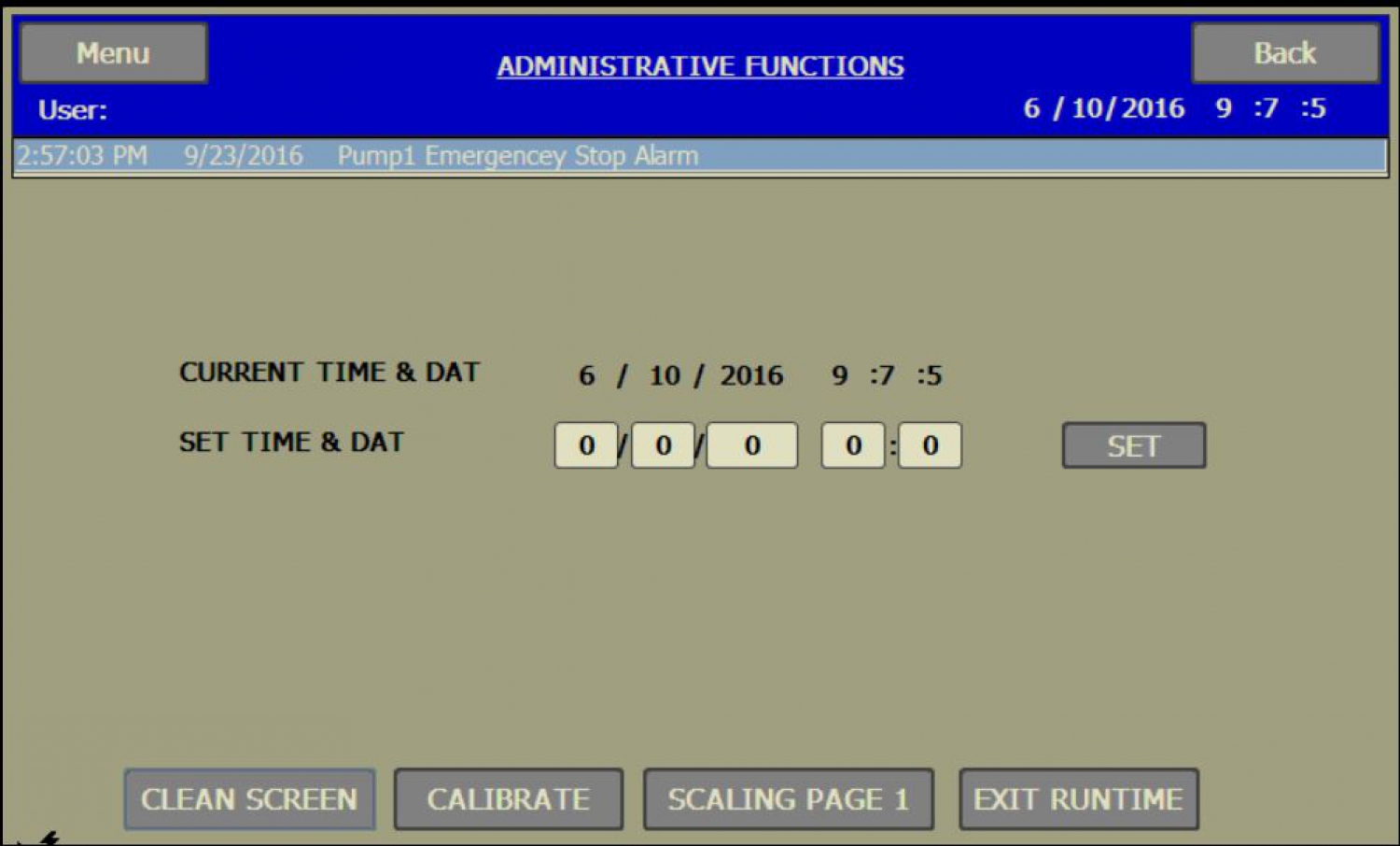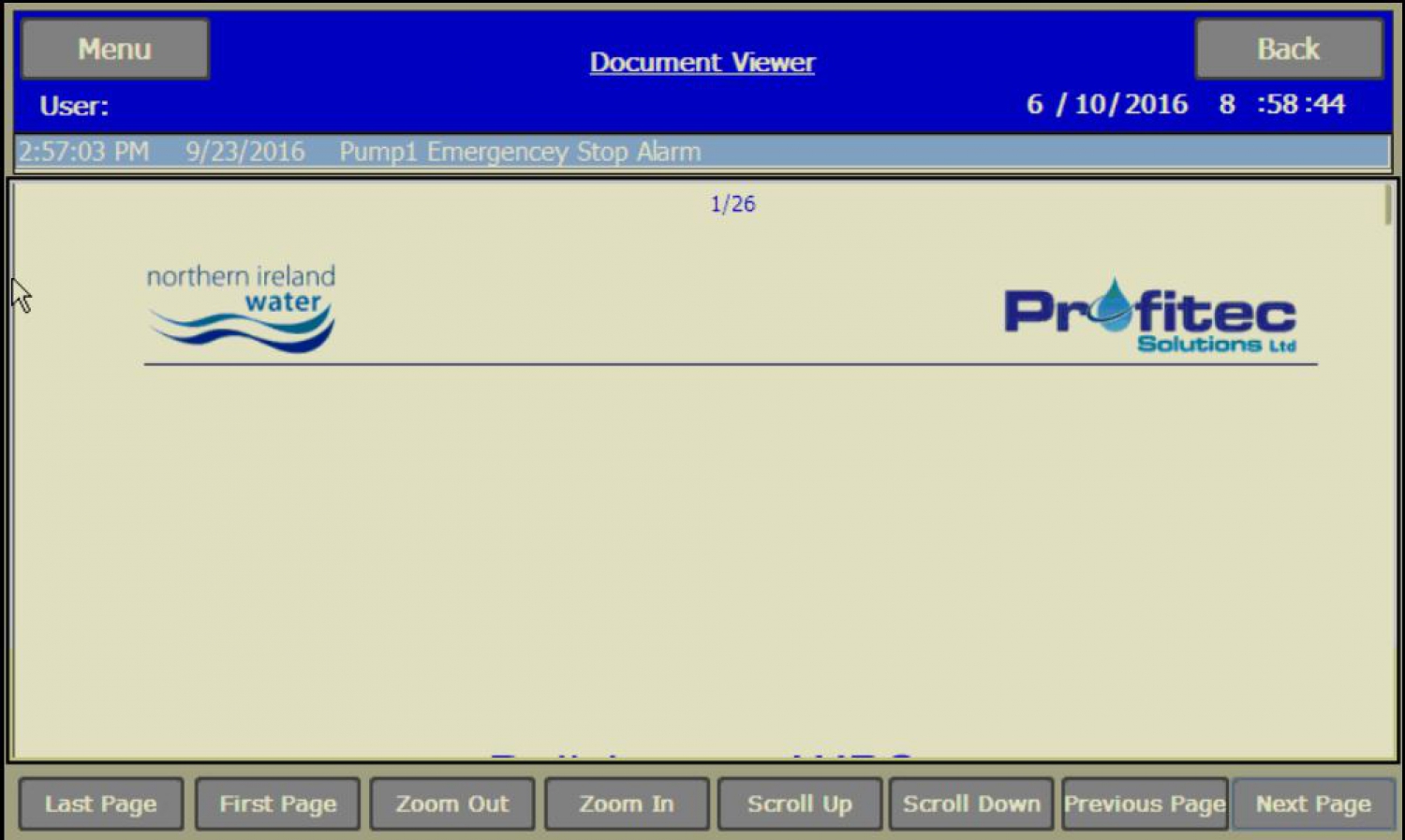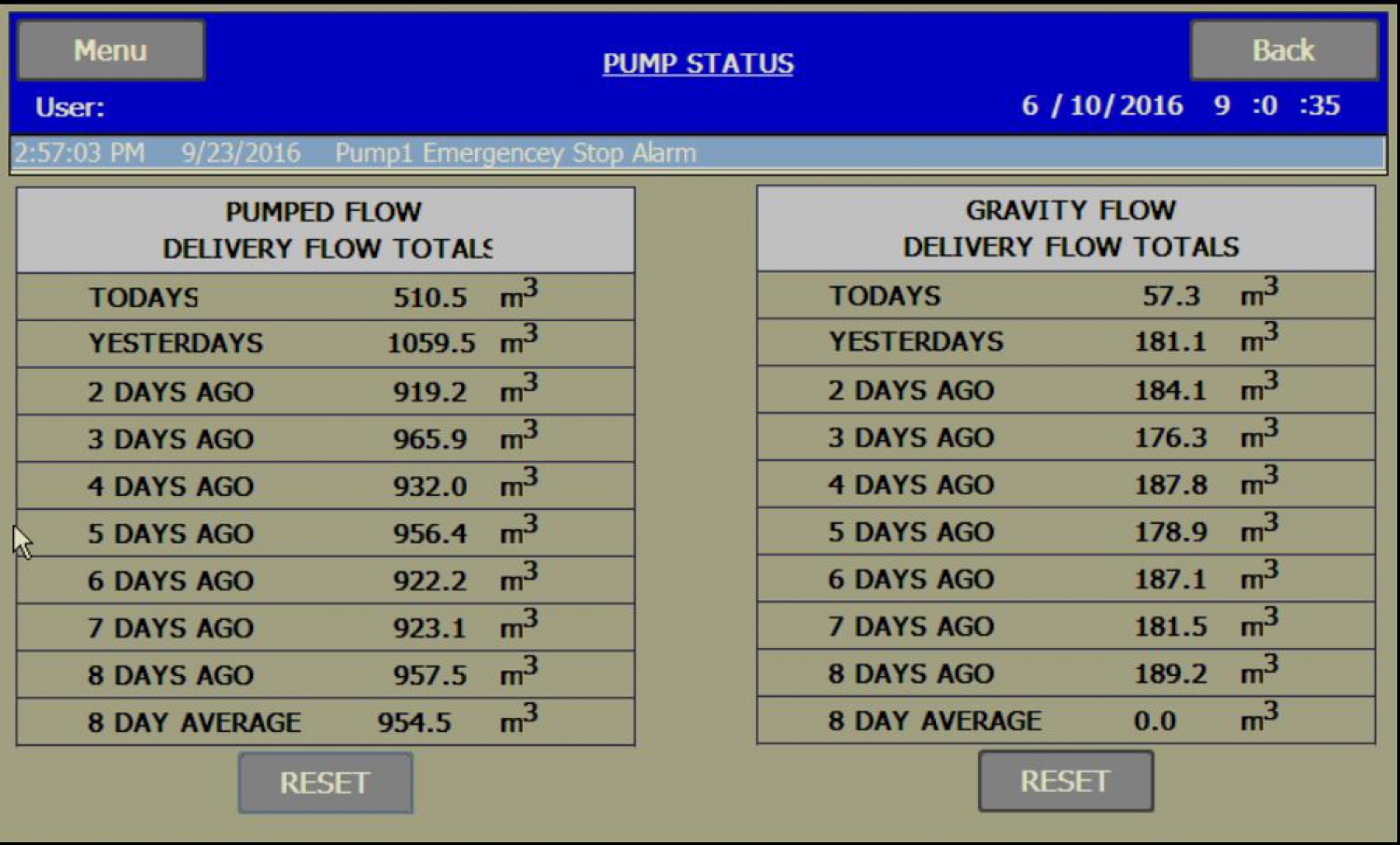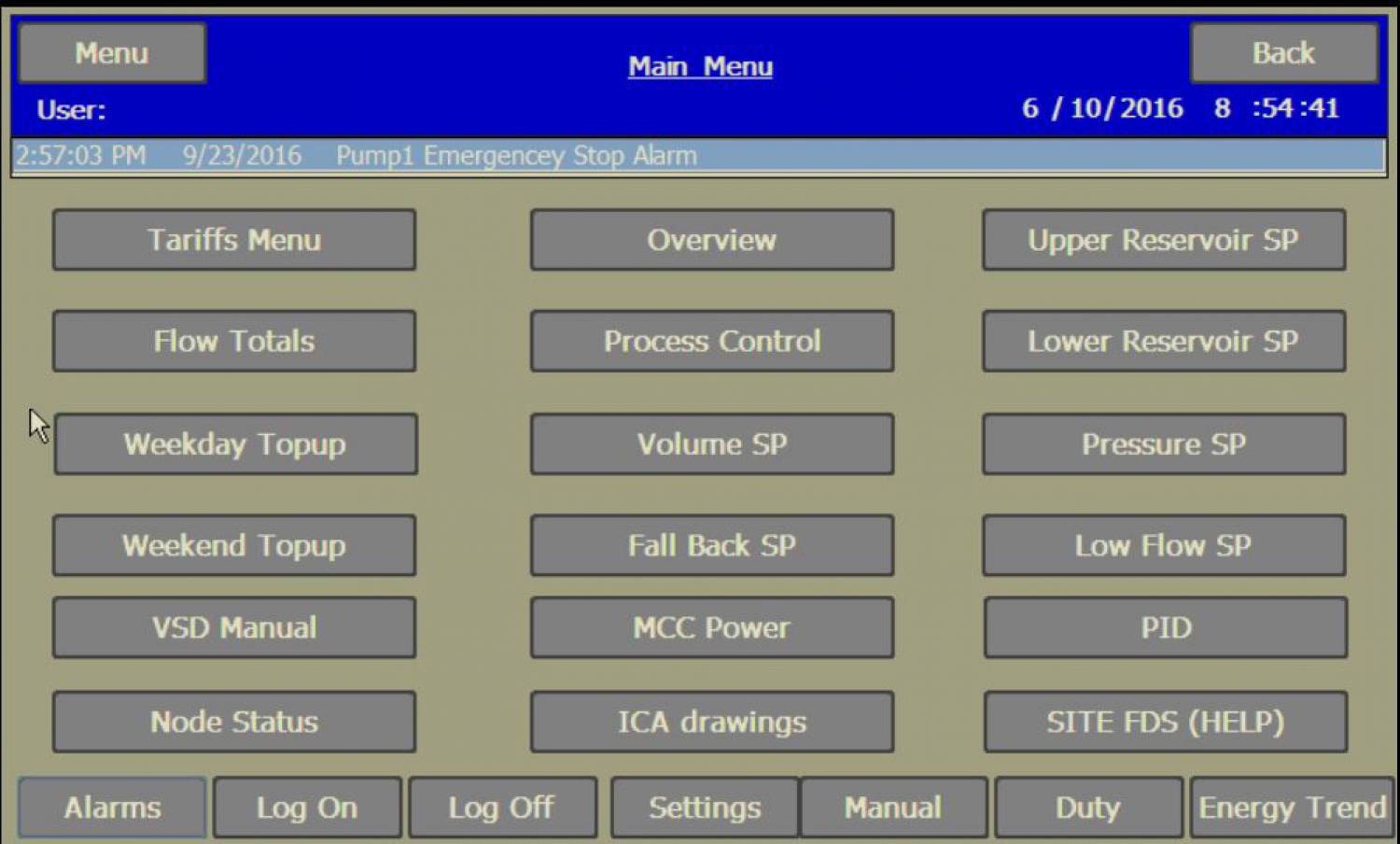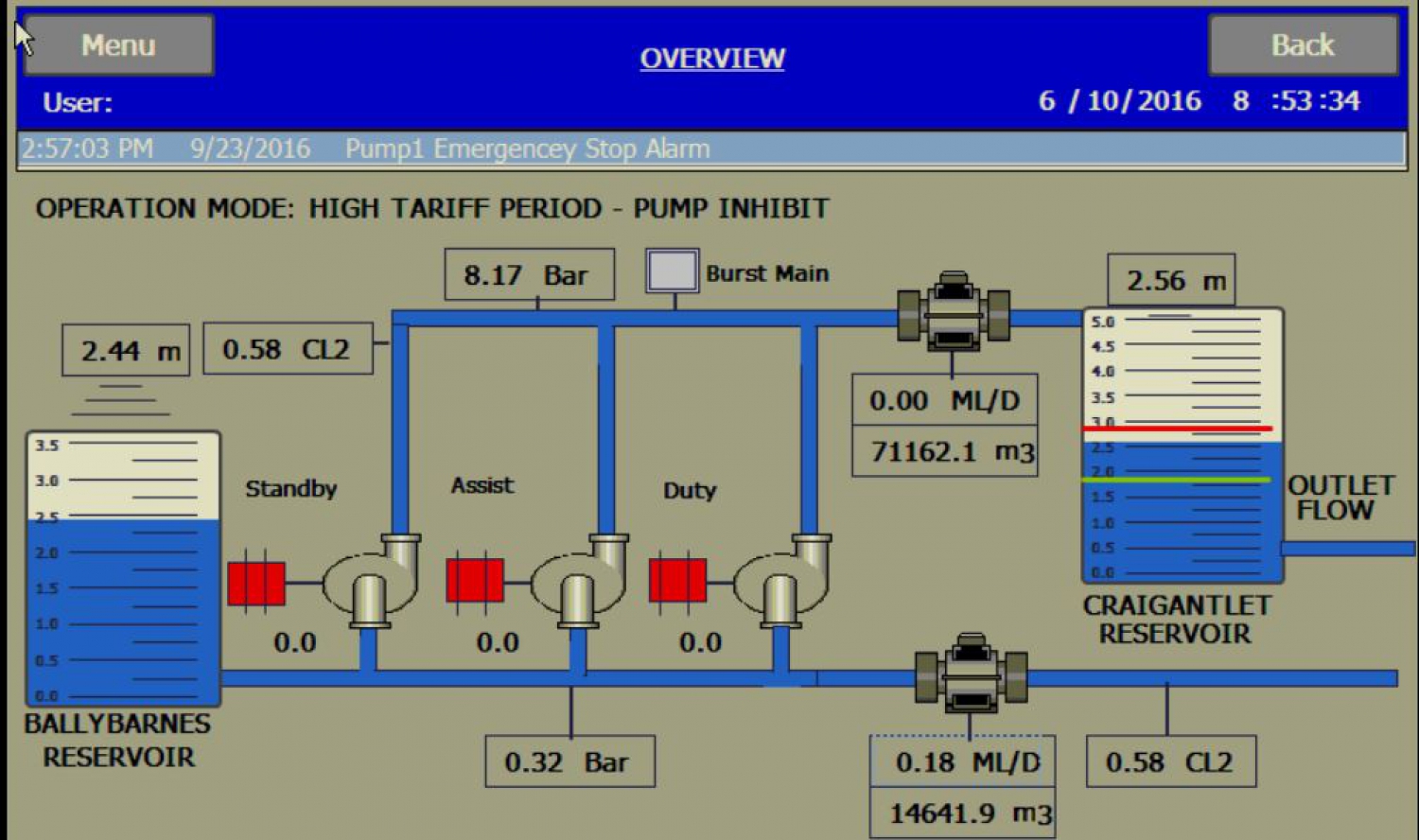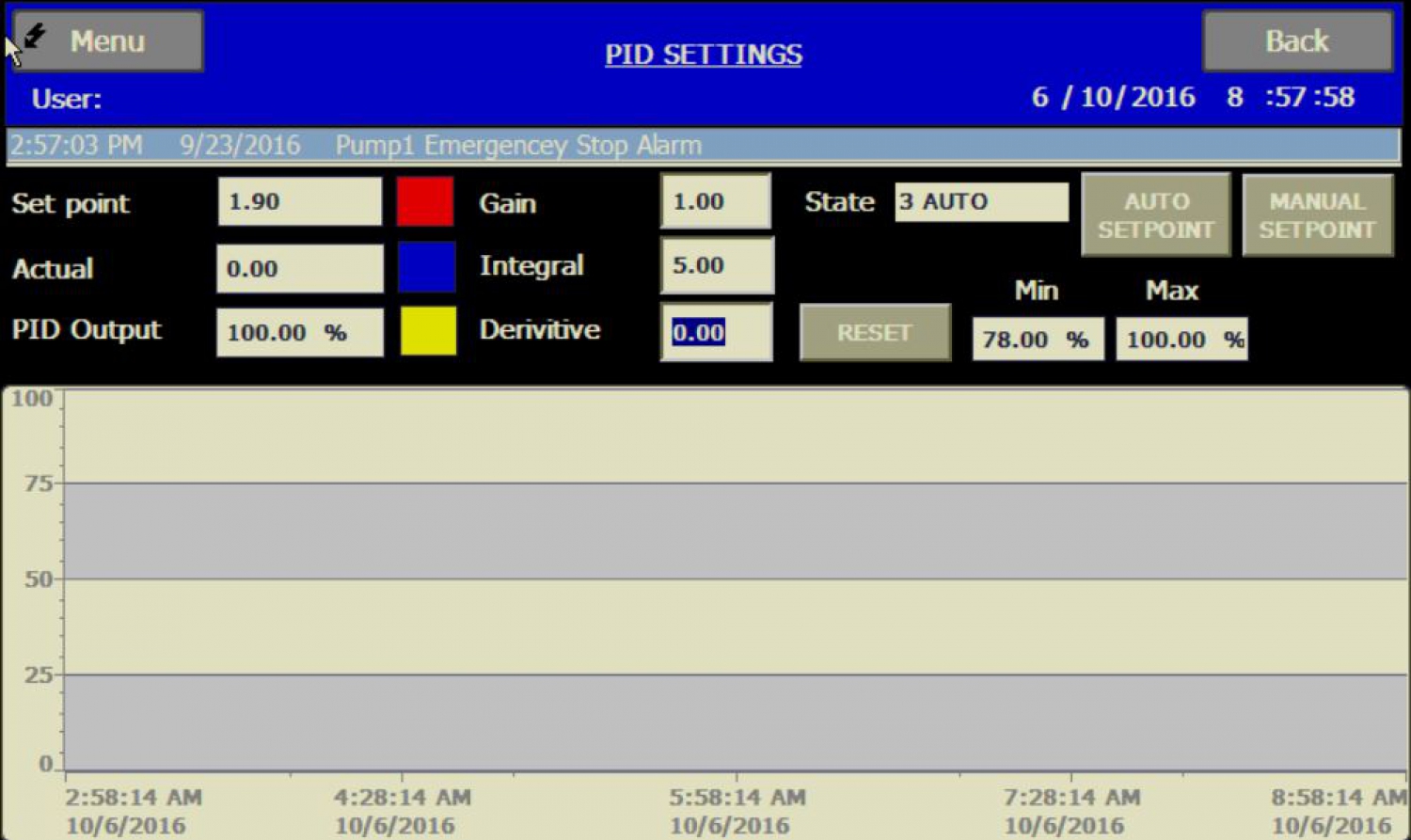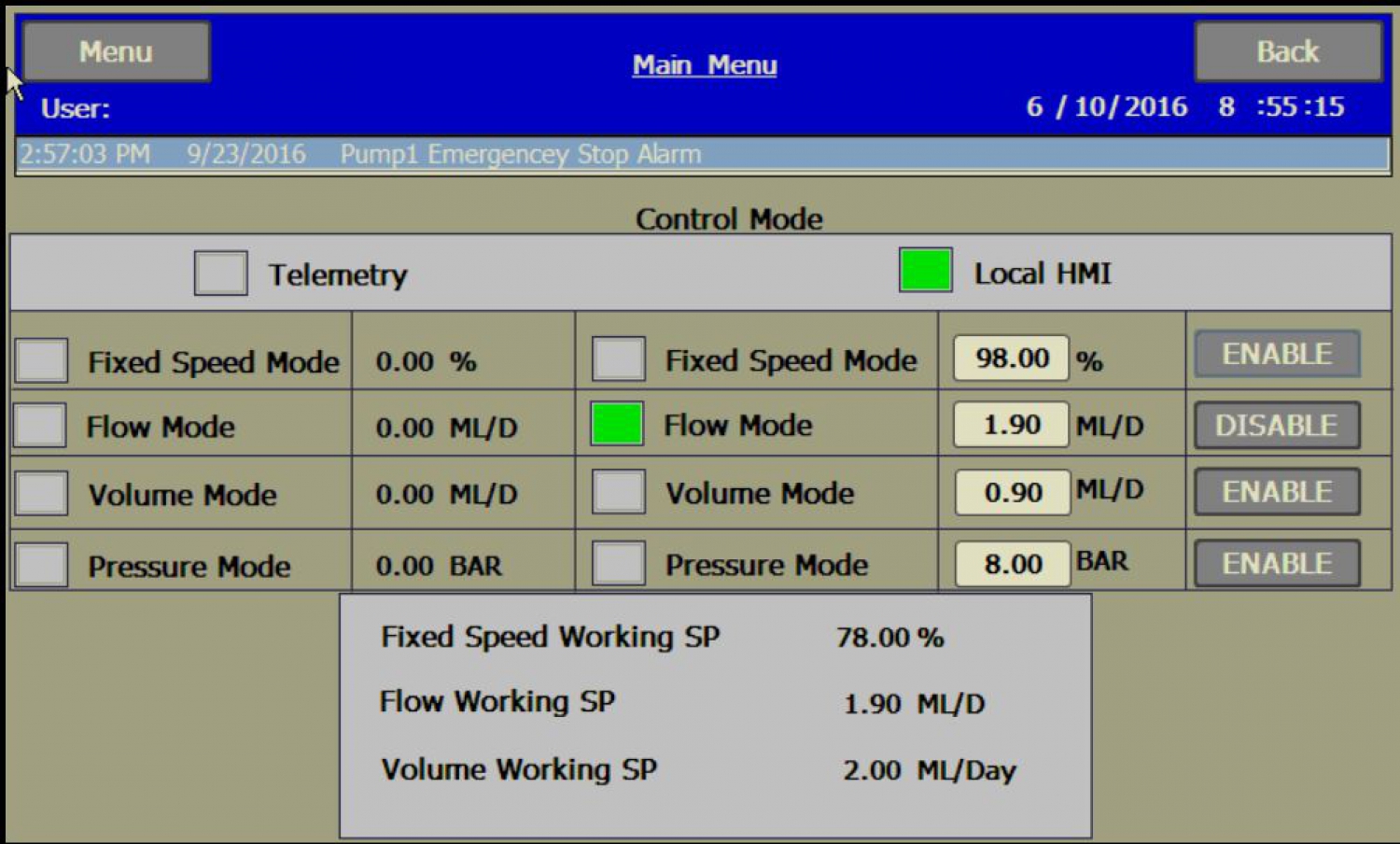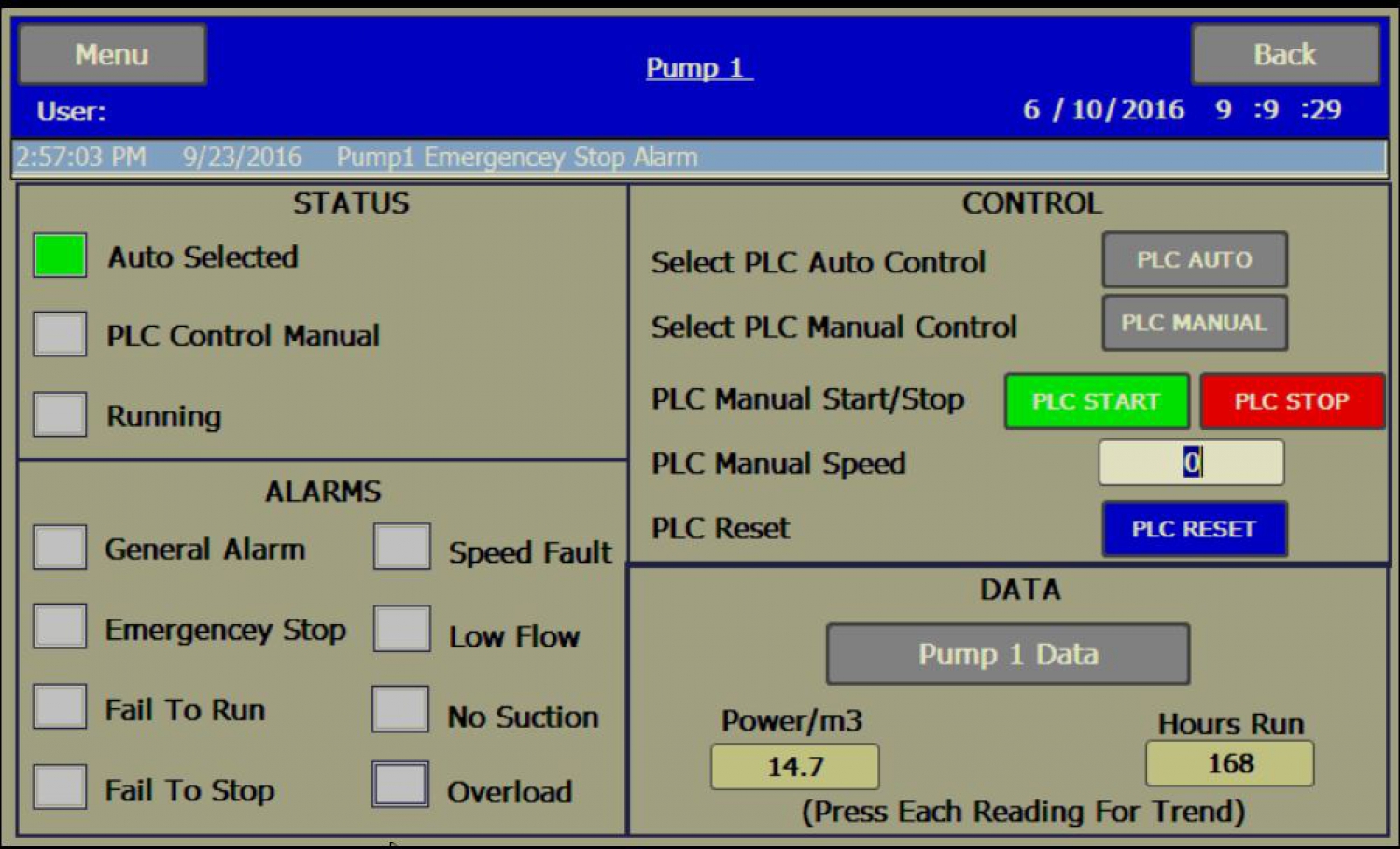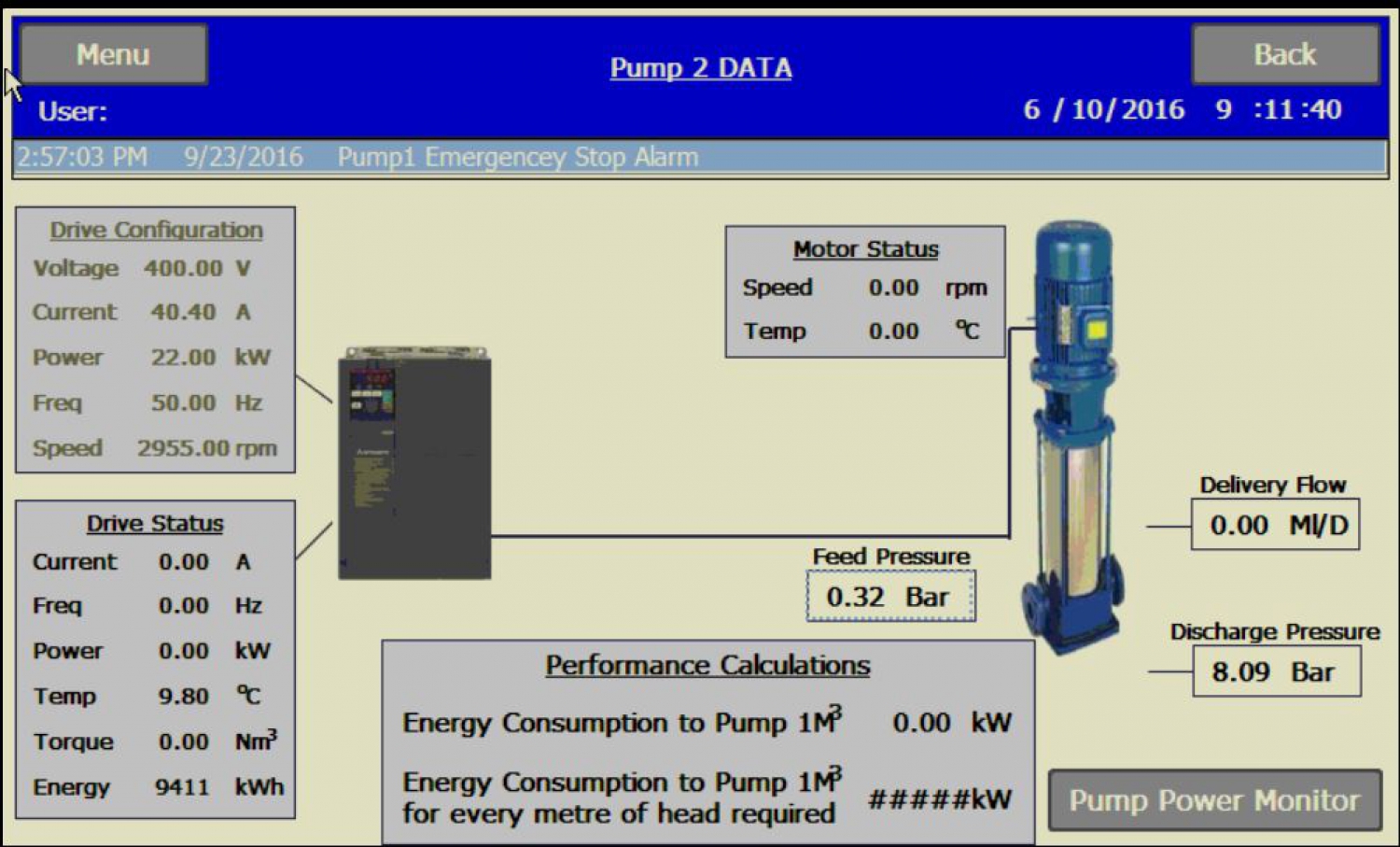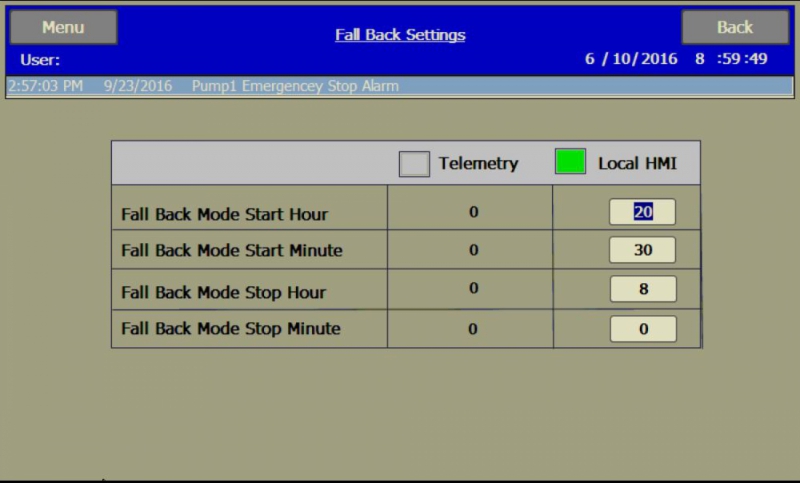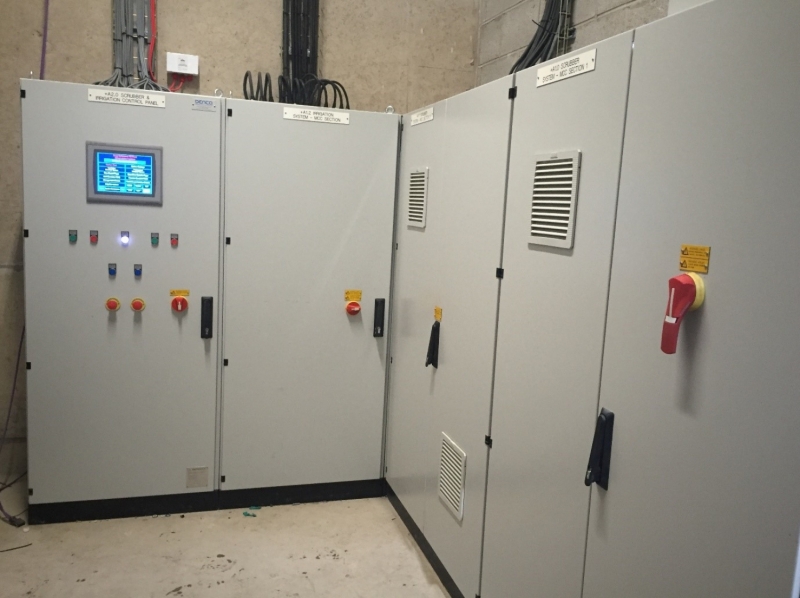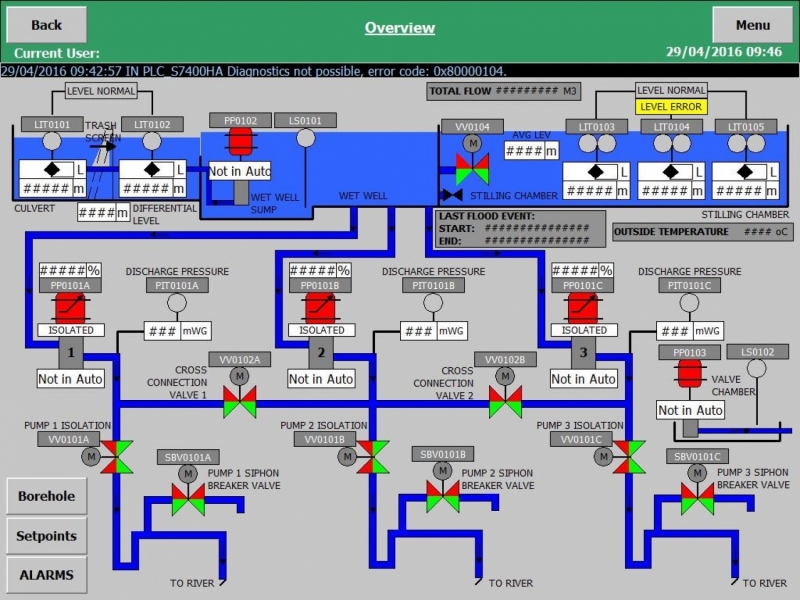Ballybarnes WPS is a water pumping station feeding Craigantlet reservoir for Northern Ireland Water.
Through initial surveys, this pumping station was identified as having potential for energy efficiency improvement. The first stage of the project was to upgrade the ICA section of the control panel and incorporate power monitoring for each pump starter and a data logger. This was left to run for a week to gather power and flow data for the existing system. The existing system consisted of two 90 kW duty/standby fixed speed drives which started and stopped based on reservoir level.
The second stage of the project was to replace the two 90Kw fixed speed drives and pumps with three high efficiency 22kW variable speed drives and pumps. These new drives were configured to run as duty/assist/standby and would start and stop based on the same reservoir levels as the previous drives, initially at a fixed speed. This was left to run for a week, with the data logger gathering power and flow data for the new drives. The results showed a 10% reduction in volume pumped and almost a 50% reduction in power usage. Due to the energy tariff structure, this resulted in a 30% saving on power costs.
The third stage of the project was to implement a control system which optimises pump efficiency and minimises energy costs. The control system consists of a Siemens PLC and HMI with Mitsubishi invertors controlled via a Profibus DP connection to the PLC.
To calculate the best efficiency point for the drive, the drive energy consumption data was taken via Profibus DP from each drive. This was utilised with flow, delivery & suction pressures to derive specific energy consumption (SEC) values. These values are then trended at the HMI to monitor pump performance. The process and energy consumption data was then logged for varying pump speeds and process conditions. This data was then analysed to find the most efficient target flow for this specific installation.
The control system utilises three layers of control. The first layer is high tariff avoidance. Adjustable high and low tariff periods are entered, accommodating week/weekend and seasonal variances. When possible, the pumps will be inhibited from running during high tariff periods. The second layer is reservoir level control. Again this accommodates week/weekend and seasonal variances and dictates when the pumps should run and when they must run to meet demand. The third layer is pump speed control. Pump speed can either be fixed or controlled to a flow or pressure setpoint. The flow and pressure setpoints are derived from performance data analysis to achieve highest efficiency. The system can also be set to volume control. When enabled, the system automatically calculates a volume setpoint based on demand over that last seven days, taking into account weekday and seasonal variances. When used with flow control, the system can calculate how long the pumps need to run to achieve the specified volume and will start the pumps at the correct time within the low tariff periods.
Using an innovative indexing system, virtually all the setpoints are made available to telemetry using only a small amount of data in the telemetry system.
This was left to run for a week, with the data logger gathering power and flow data for the new control system. Compared to the original system, the results showed a 5% reduction in volume pumped, a 48% reduction in power usage, but a huge 53% reduction in power costs.

